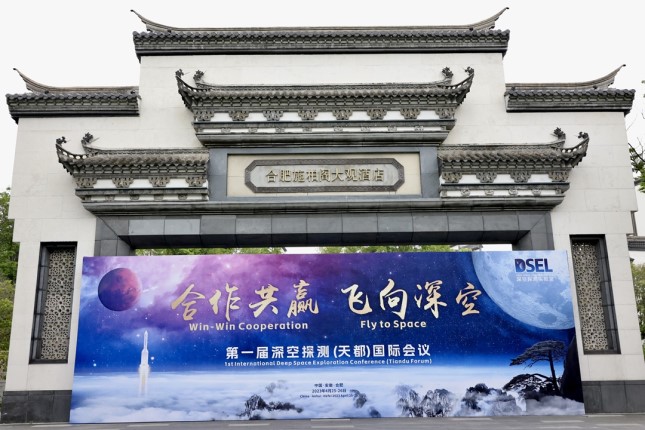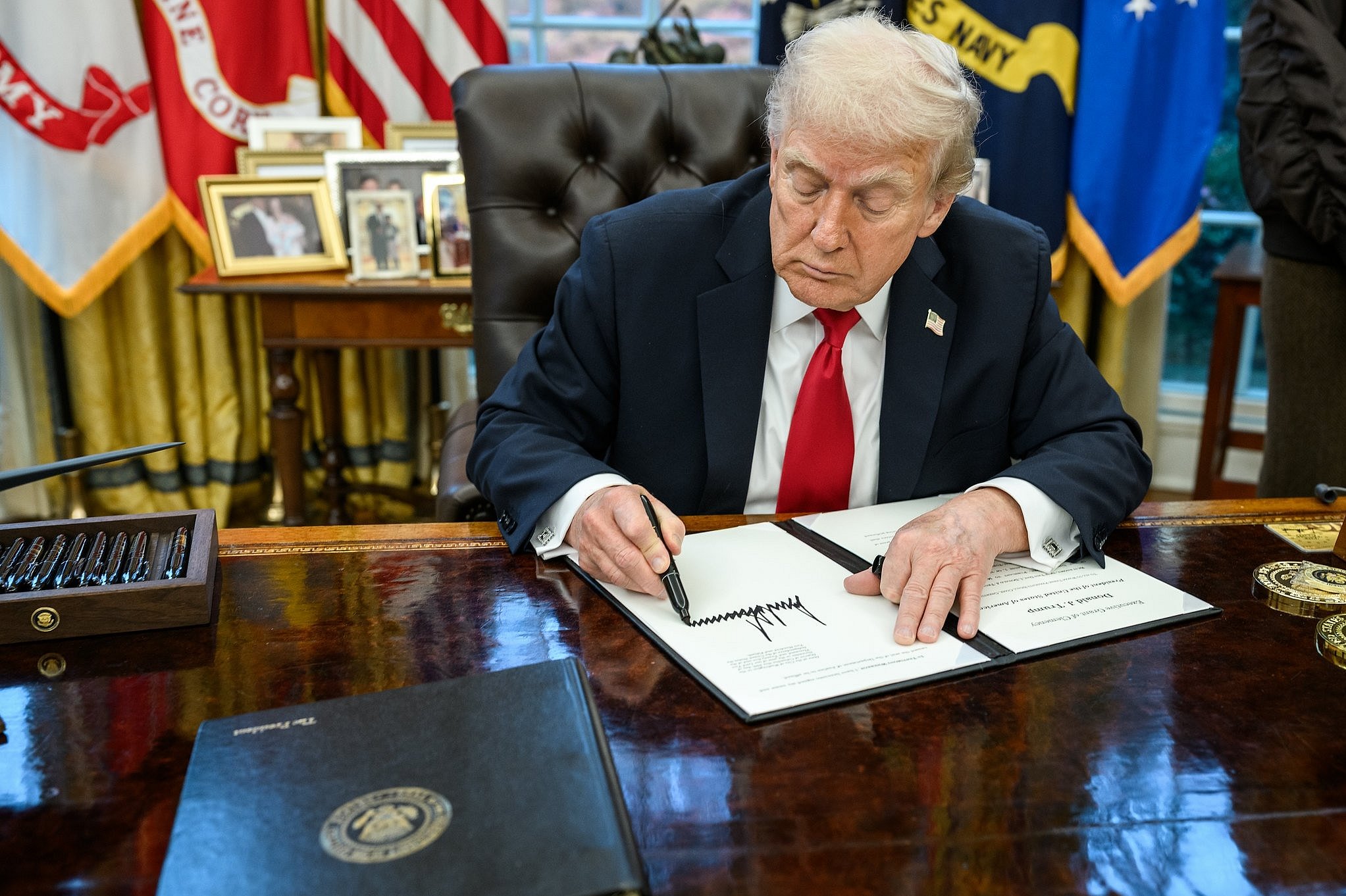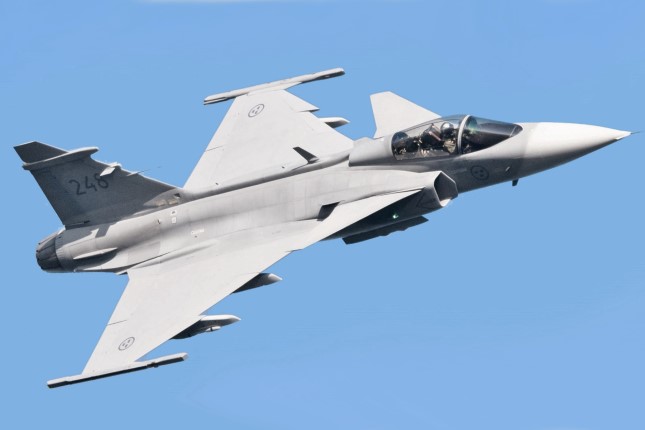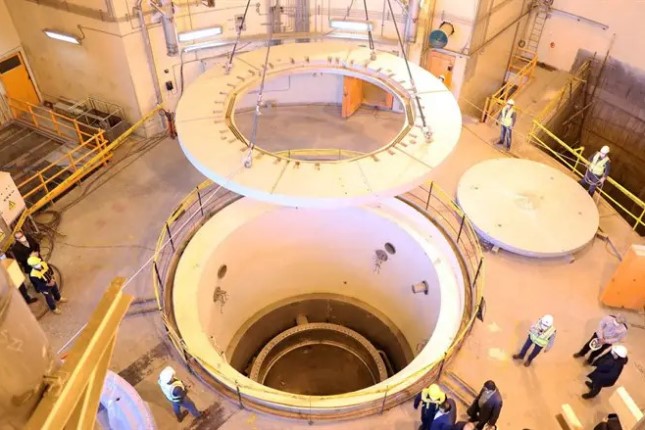China plans to work with global partners to construct a basic version of International Lunar Research Station (ILRS) before 2028, an improved version of ILRS earlier than 2040, and a further complete one with application functions by around 2050, Director General of Deep Space Exploration Laboratory Wu Weiren said on Tuesday.
The basic version of the ILRS to be completed before 2028, is tasked to execute lunar environment exploration and experiments and verifications of the use of lunar resources, said Wu, who is also an academician from the Chinese Academy of Engineering, at the opening event for the First International Deep Space Exploration Conference, or the Tiandu Forum, in Hefei, East China's Anhui Province.
And with the 2040 improved version of the ILRS, scientists are hoping to carry out Earth-moon space environment exploration and relevant scientific experiments, as well as complete the construction of comprehensive constellation Queqiao satellites which will enhance communication, navigation and remote sensing capabilities, according to Wu.
Following these developments, the lunar research station will be gradually upgraded into a multi-function, application-oriented moon base, Wu noted.
As a crucial part of the ILRS basic version construction stage, China will launch the Chang'e-6 moon probe by around 2024, which will be first-ever lunar sample returning mission from the dark side of the satellite for mankind.
Besides, China's Chang'e-7 probe is expected to be launched around 2026, to explore the lunar south pole in hopes of finding the existence of water; Chang'e-8 will be launched around 2028, aiming to carry out experiments on the use of lunar resources.
Three international lunar missions will also be launched toward the building of ILRS basic version. And after 2030 and the completion of the ILRS basic version, missions code named ILRS-1/2/3 will be launched toward building of an improved version of the ILRS.
Wu also disclosed that Chang'e-6 will be carrying lunar probing payload from several other countries including France, Italy, Sweden and Pakistan. As of Chang'e-7 mission, China has received applications from 11 countries and their 18 kinds of payload for similar carry-on cooperation.
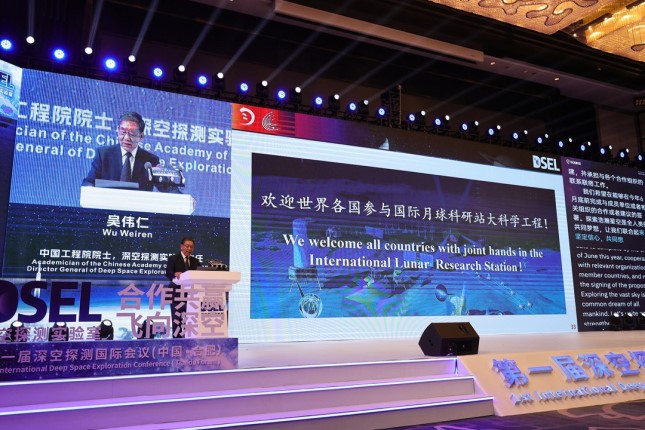
China has carried out cooperation on moon exploration with more than 19 countries and regions around the world and singed 23 international cooperation agreements, ever since the implementation of the country's lunar probe project in 2004, China's space authorities said.
The ILRS, an international cooperative proposed by China, will comprise five infrastructure systems, including an Earth-lunar transportation system, long-term operation and supplying system on the lunar surface, lunar surface transport and operation system, lunar scientific research facility as well as a ground support and application system.
The station will be capable of providing energy supplies, communication and navigation, space shuffling, lunar research and ground support services and as well as serving as a command center, the Global Times learned.
Russia, Pakistan, Argentina and international organizations including the Asia Pacific Space Cooperation Organization have inked agreements to participate in the ILRS, with more than 10 other countries currently negotiating over the agreement.
It is hopeful that all the participants of the ILRS program will complete the singing of cooperation agreements before the end of June. "We welcome all countries with joint hands in the International Lunar Research Station," Wu said.
Speaking at the same event, Wu Yanhua, chief designer of China's major deep project on deep space exploration, outlined China's upcoming tasks in the deep space exploration field.
China plans to launch Tianwen-2 probe by around 2025 via the Long March-3B launcher, and the mission will execute fly-by and sample returning mission with a near-Earth asteroid named 2016HO3 and then by around 2034, another fly-by with a main-belt comet named 311P, Wu Yanhua said.
Zhang Rongqiao, chief designer of China's interplanetary project, told the media that the launch of Tianwen-2 is expected to be around May 2025 with the research stage work of the prototype almost completed.
Zhang also revealed to the media that the waking of the Zhurong Mars rover would have to meet two conditions -temperatures inside its cabin are above -15 C and the solar energy it generates reaches 140 watt. The current dormancy of the rover in Mars spring could be caused by impacts of its power generating due to unexpected accumulation of dusts.
Tianwen-3 will be a Mars sample retuning mission and Tianwen-4 will be about Jupiter system exploration, Wu Yanhua disclosed.
To protect humans from the common threat of asteroid impact, Wu Yanhua revealed that China will carry out its first demonstration task of such near-Earth asteroid defense capability to crash a 50-meter-level asteroid target and assess the effect of such collision in a direct in-orbit fashion. By 2040, a basic defense capability will be formed in part on the basis of international cooperation, he said.
Improving a near-Earth asteroid early warning system, verifying the engineering capability to asteroid defense and working international forces to construct a joint responding capability, represent major responsibilities for a space power, Wu Yanhua stressed.
Source: The Global Times.
